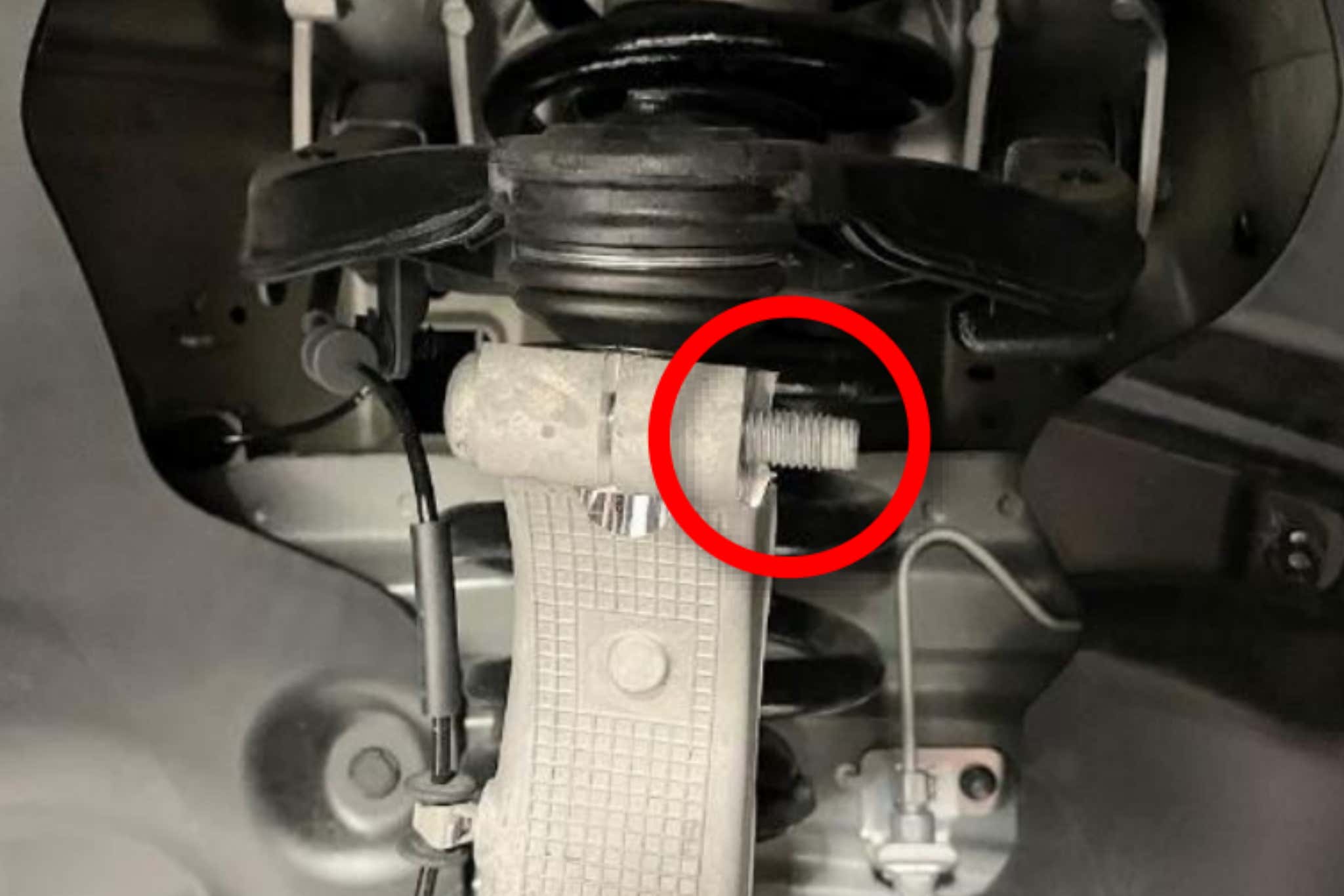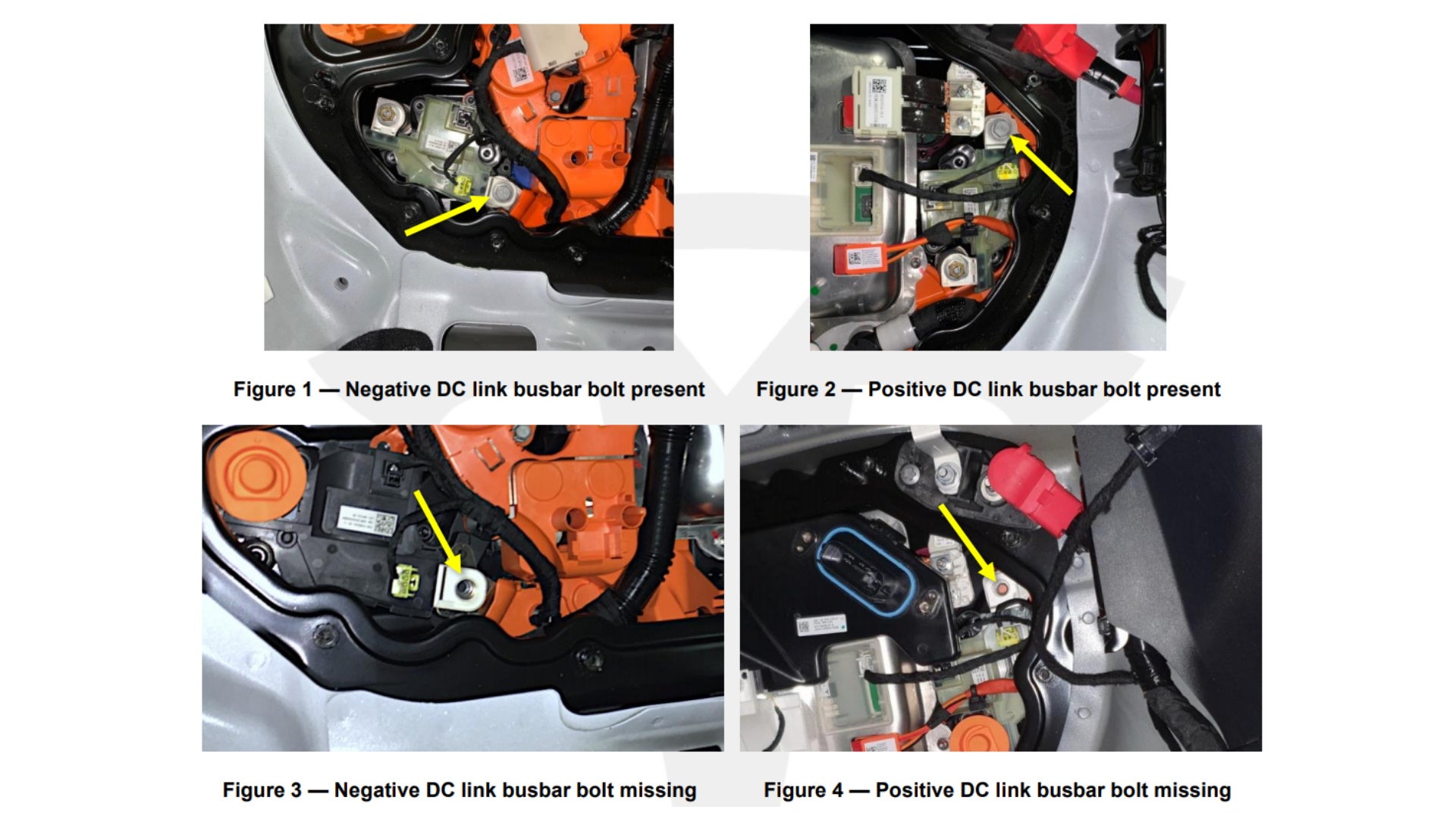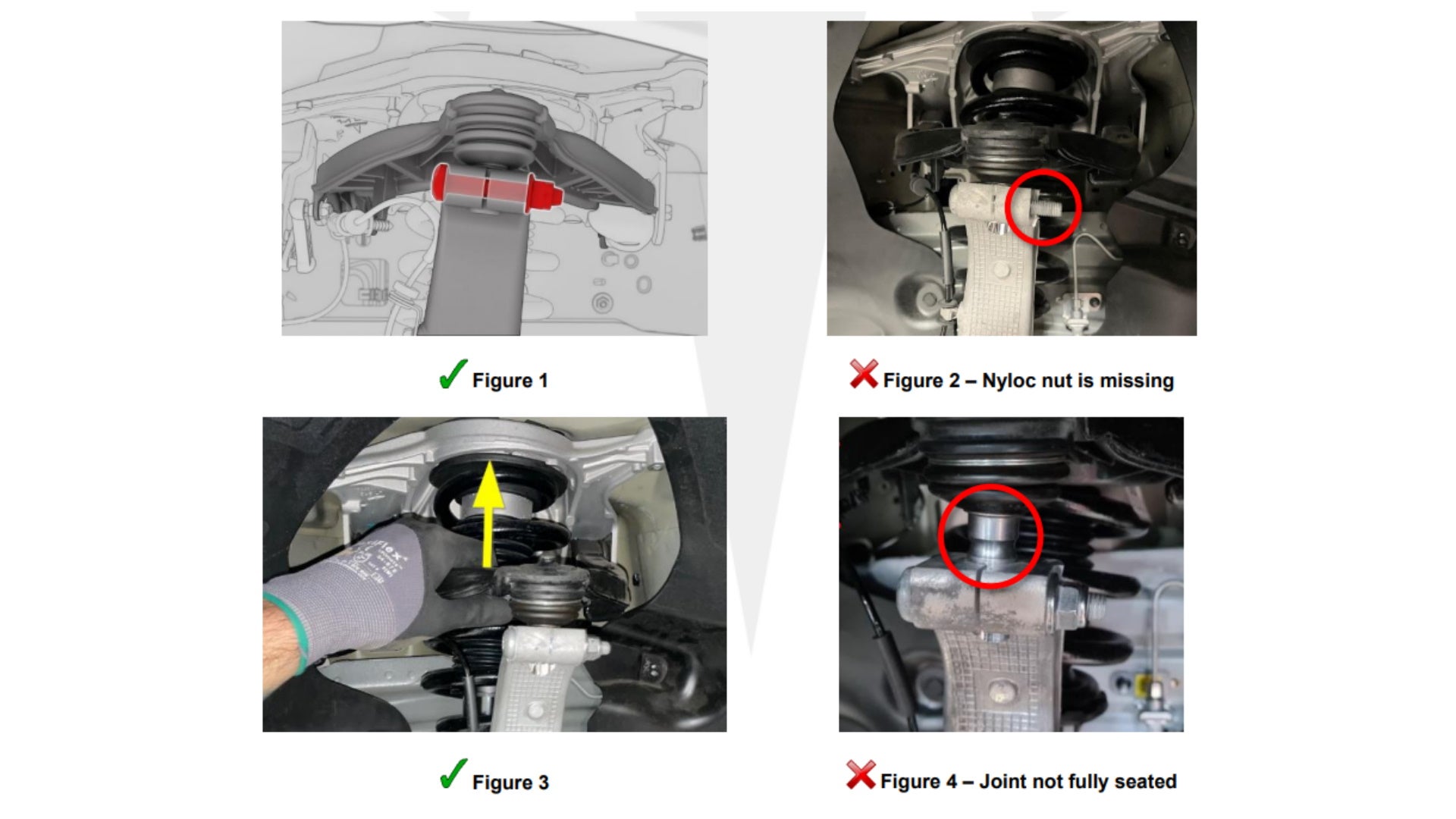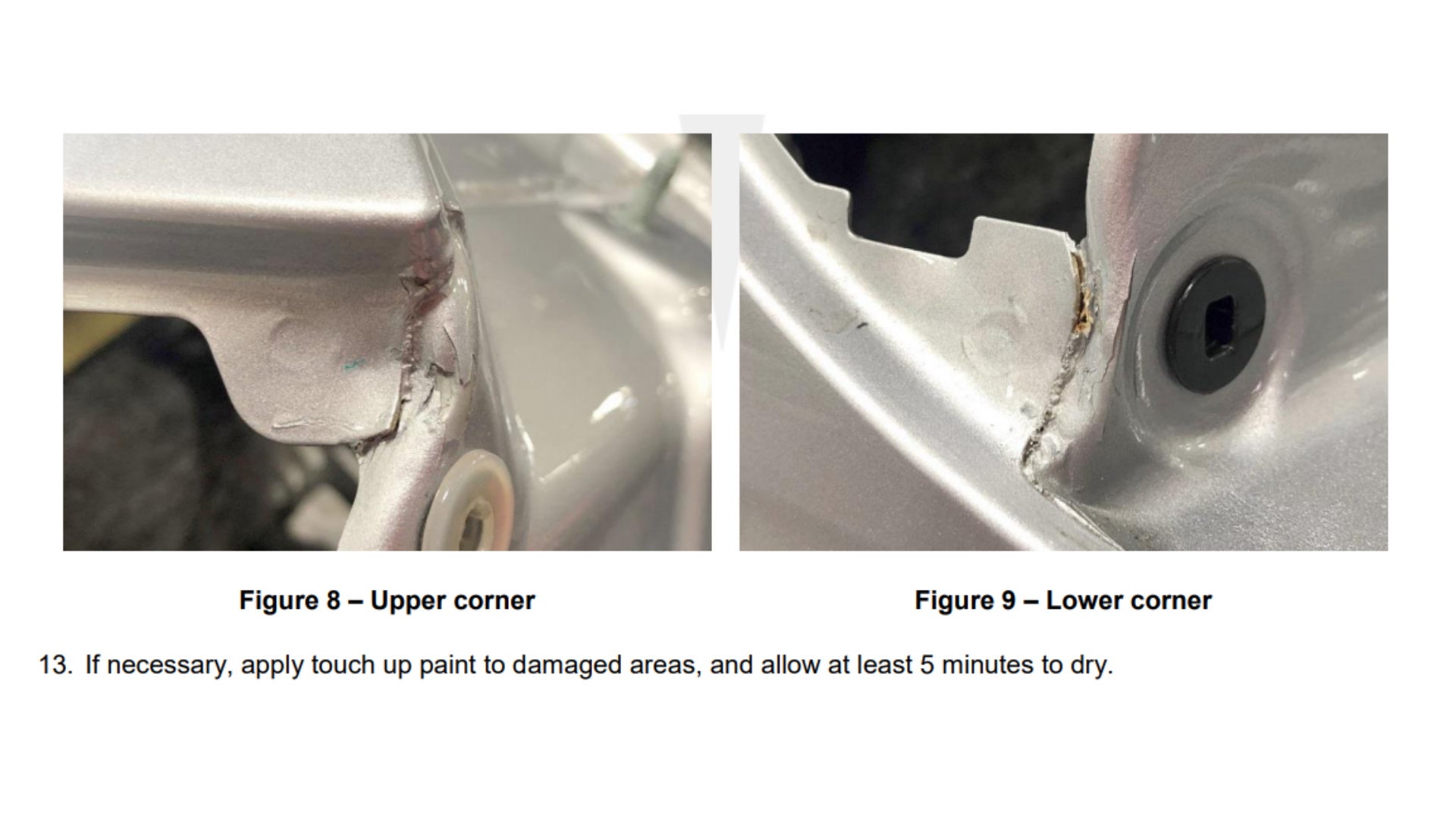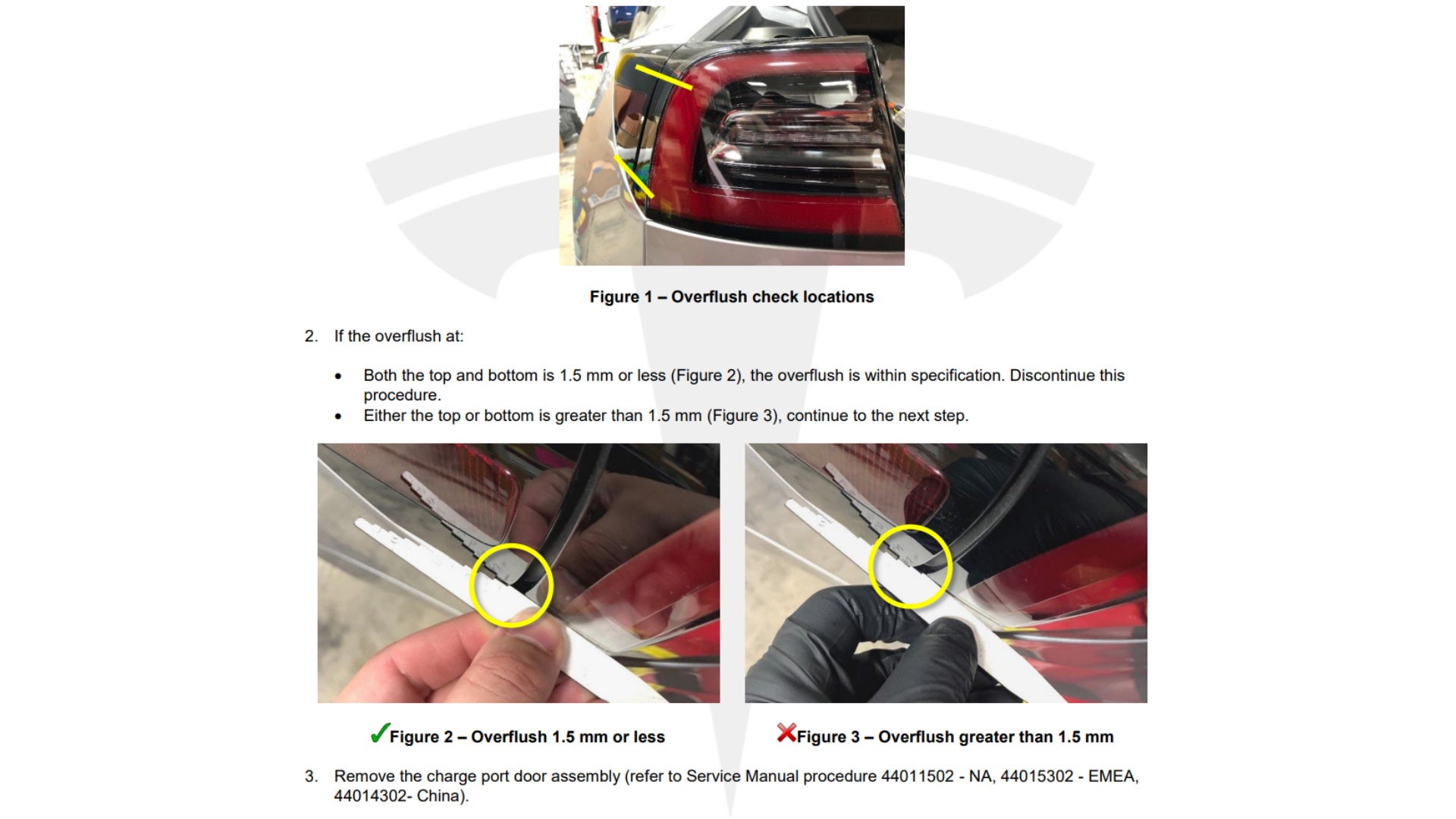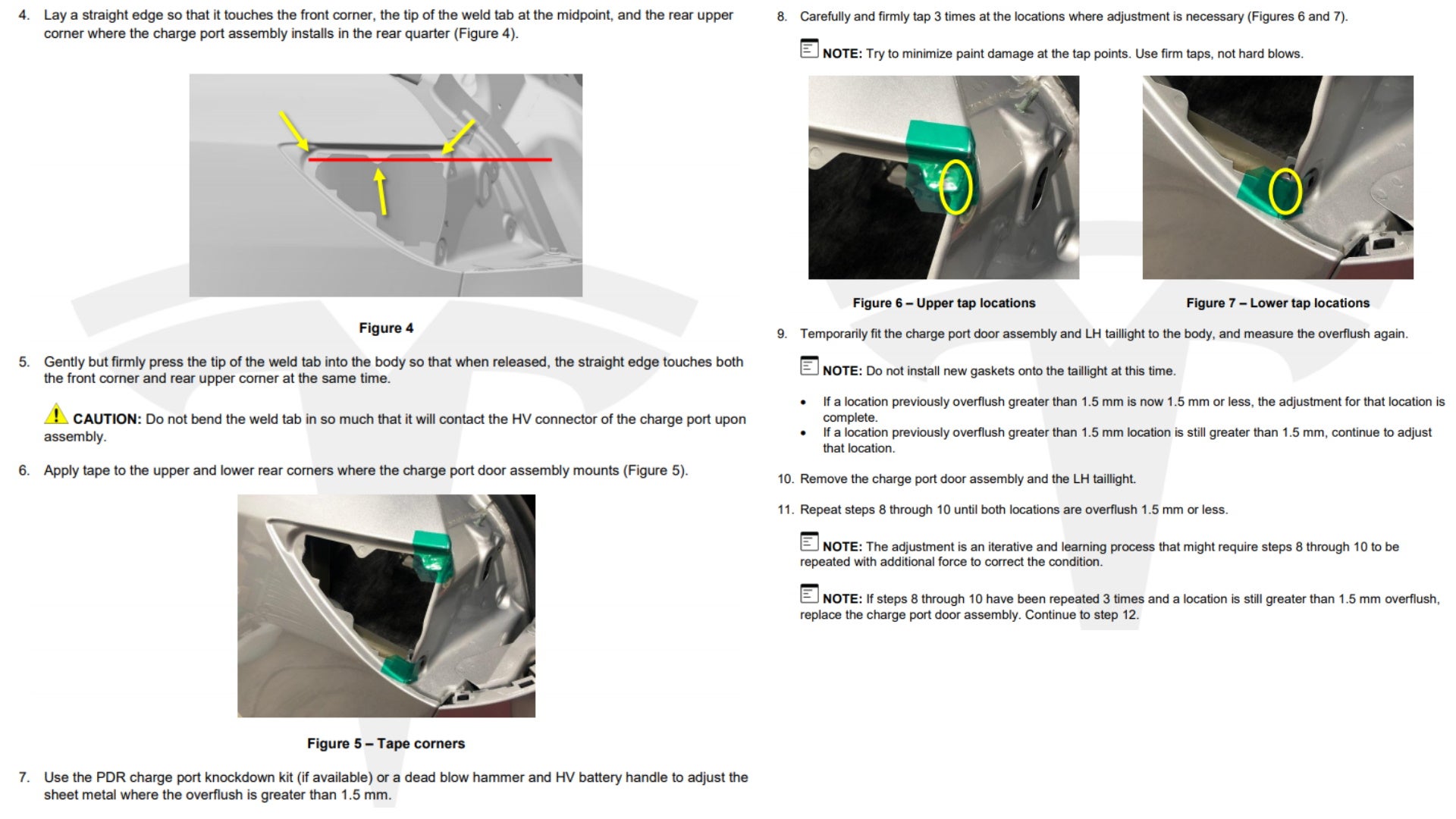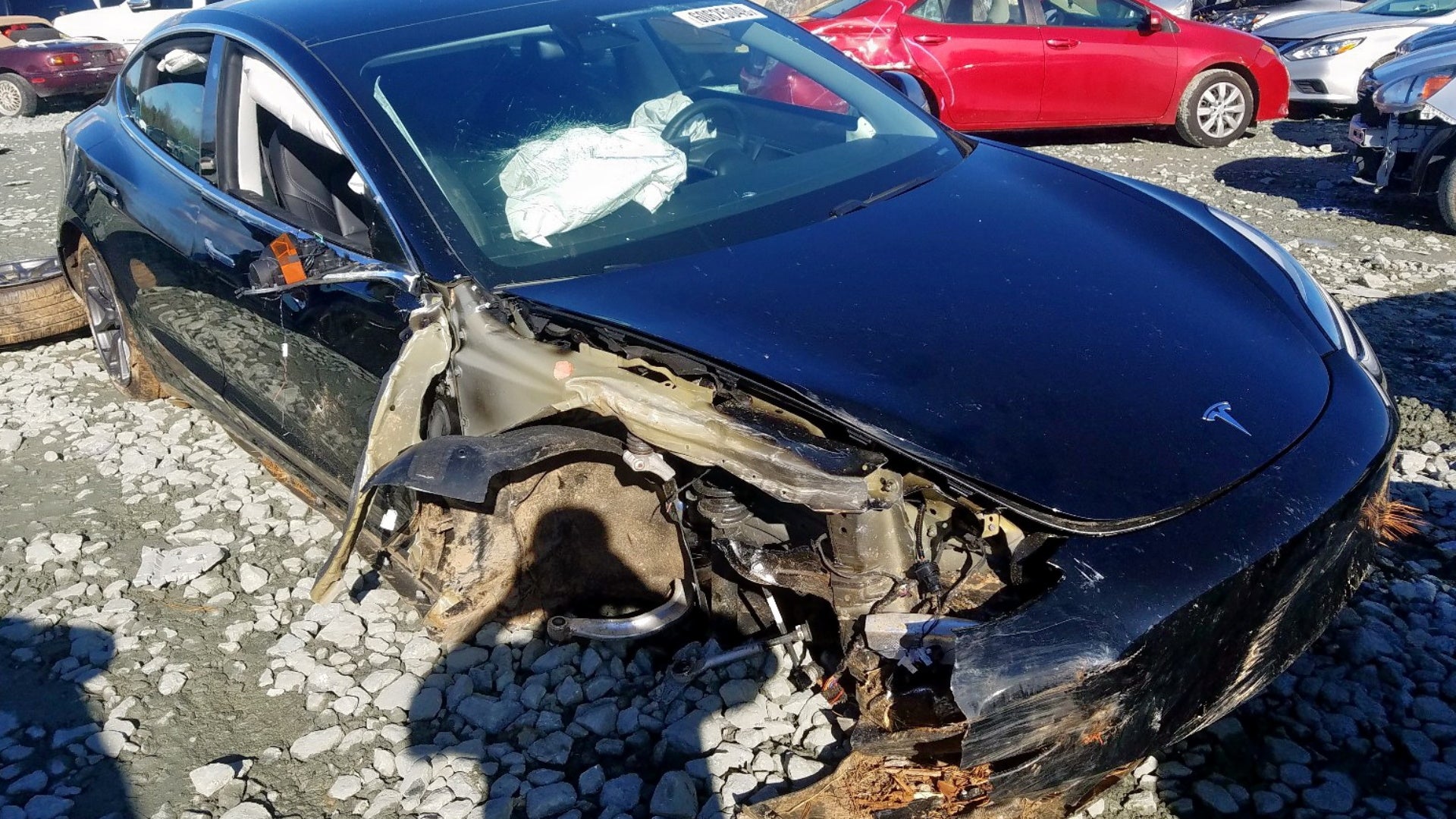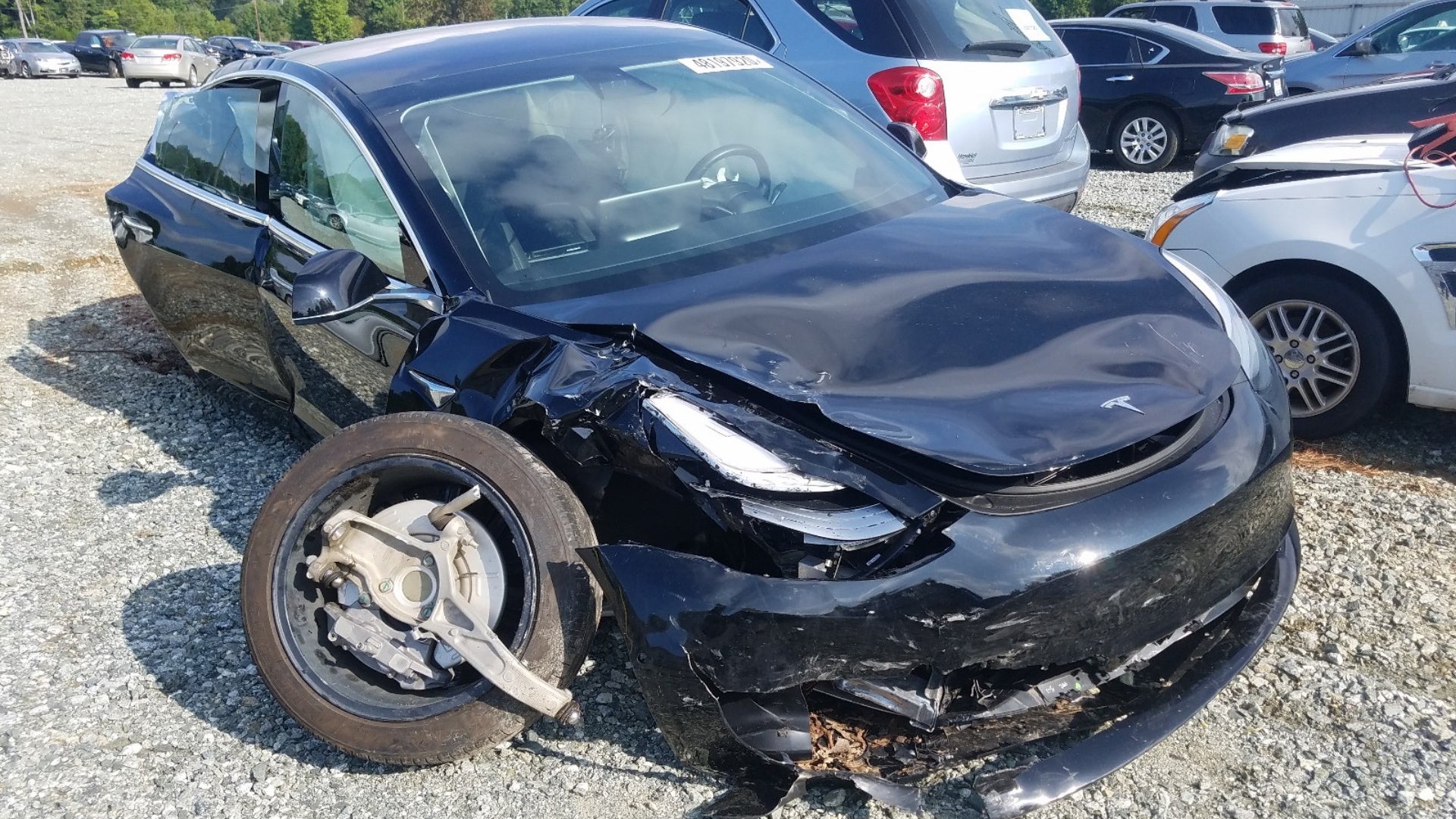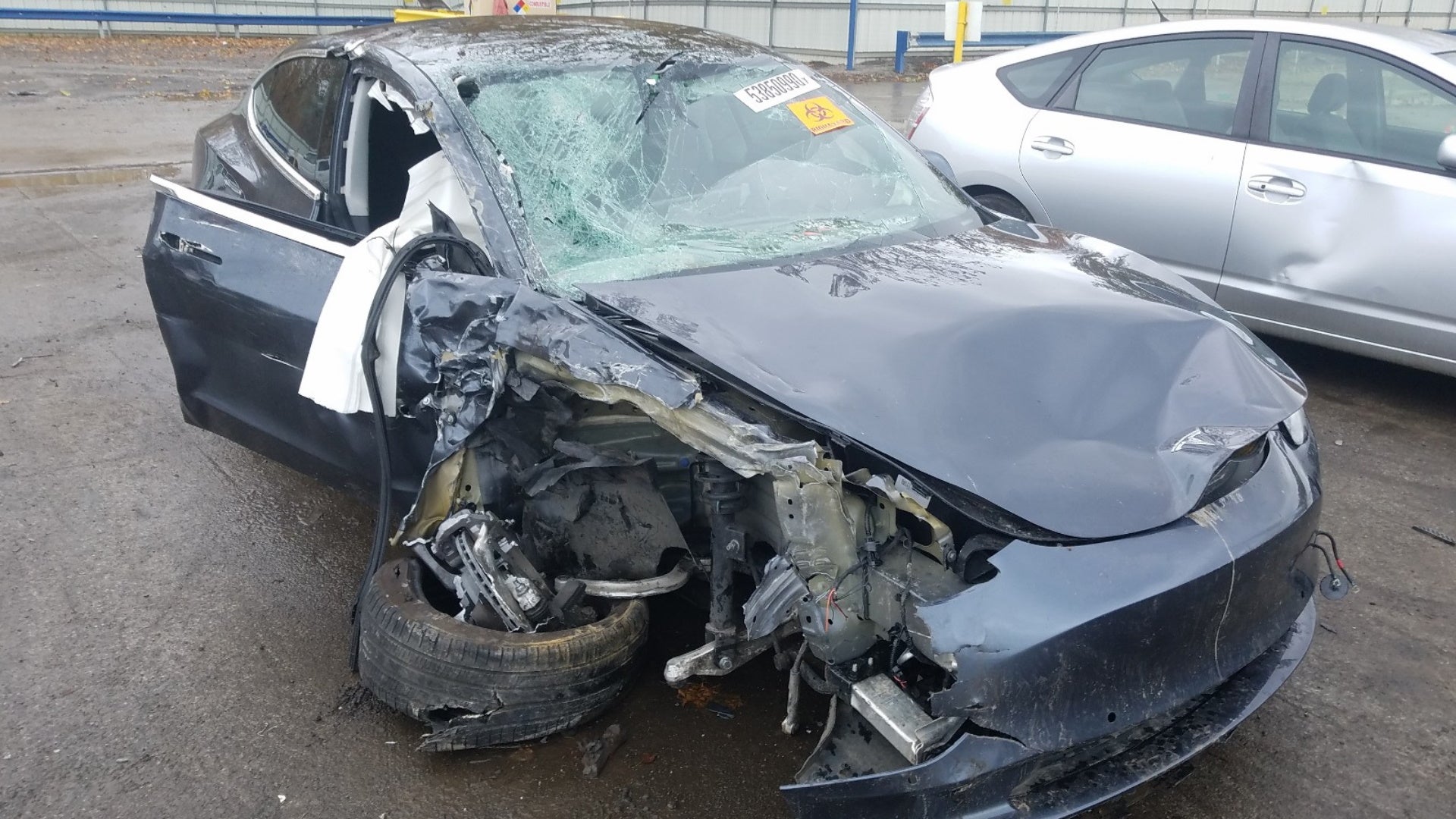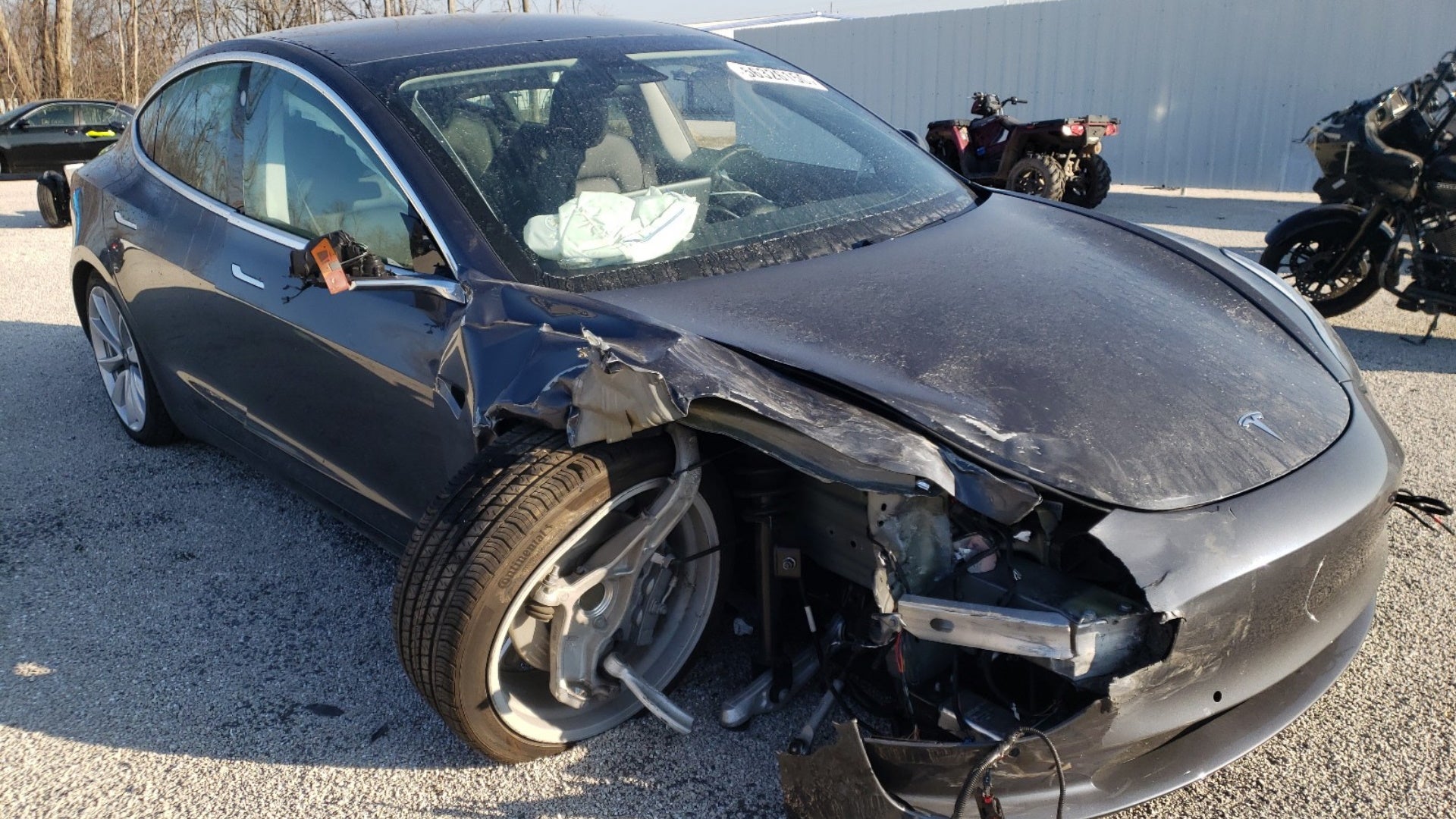The service bulletins are sort of humorous in their official language of very basic fixes to really obvious issues with these cars. If the “DC link busbar” bolts are missing in the Model 3, replace them! If the charging door isn’t sitting flush—this defect is present on the 3 and Y—hit the non-flush panel with a hammer until it sits right. But if you start roleplaying as the village blacksmith and take it just a tad too far, replace the entire panel. Also, if you mess up the paint when you do this, make sure you touch it up. It looks like there’s a little bit of rust forming in that area anyway, so it’s probably a good idea to do that in any case.
The most alarming one of these issues is the self-locking nylon nut that’s straight-up missing from the front suspension. Apparently, this issue is widespread enough on the Model Y to warrant a service bulletin. If this bolt fell out during driving—which it would if there was no nut holding it on—one side of the front suspension would just collapse. Obviously, that’s something you don’t want to happen while you’re driving, and could lead to a serious accident and bodily injury. Possibly even worse.
Reading through other complaints on the NHTSA’s page for the Model 3, it seems like suspension issues are very common. Problems with ball joints snapping seem to be by far the most common issue. It’s safe to read clearly inflammatory messages with a little bit of skepticism, but looking through wrecked Model 3s on Copart, it seems like that is at least a somewhat common issue.


